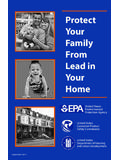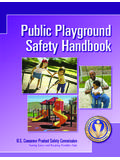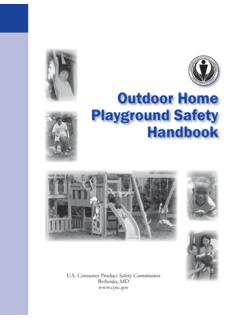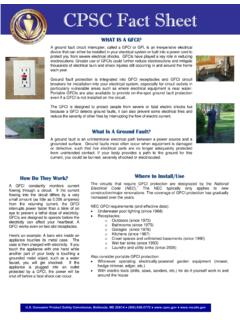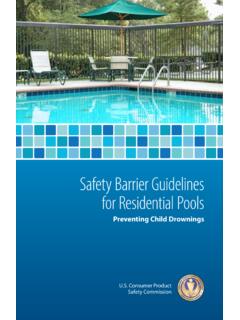Transcription of REPAIRING ALUMINUM WIRING - CPSC.gov
1 Consumer Product Safety CommissionBethesda, 516 REPAIRINGALUMINUM WIRING1 ALUMINUM WIRINGThe Consumer Product Safety Commission ( cpsc ) staff and other government officials have investigated numerous hazardous incidents and fires throughout the na-tion involving ALUMINUM branch circuit WIRING . A national survey conducted by Franklin Research Institute for cpsc showed that homes built before 1972, and wired with ALUMINUM , are 55 times more likely to have one or more wire connections at outlets reach fire Hazard Conditions 1 than homes wired with copper. That survey encompassed only the wire connections at outlets. It did not address other types of ALUMINUM wire connec-tions and splices in homes that are also prone to fail. No information was developed for ALUMINUM -wired homes built after 1972.
2 The fire hazard investigated by cpsc occurs at connections with ALUMINUM wire, including receptacles or switches and junction boxes; or the hazards occur with major appliances, including dishwashers or furnaces, for example. There are several deterioration processes in ALUMINUM wire connections that cause increased resistance to the flow of electric current, resulting in damage that is cumulative in effect. That increased resistance causes overheat-ing, sometimes at hazardous levels, when current is flowing in the shortage of copper in the mid 1960s caused builders to increase the use of ALUMINUM wire in residential electrical distribution systems from the few large-power circuits ( , for electric clothes dryers and ranges), to general purpose 15- and 20-ampere-rated circuits.
3 Homes built before 1965 are unlikely to have ALUMINUM branch circuit WIRING . Electrical cables installed between 1965 and the mid 1970s in new homes, in additions, and as part of rewired/new circuits may contain ALUMINUM WIRING . On April 28, 1974, two people died in a home in Hampton Bays, fire officials determined that the fire was caused by an overheating ALUMINUM wire connection at a wall receptacle. 1 The survey conducted by the Franklin Research Institute defined fire Hazard Conditions to occur when receptacle cover plate mounting screws reached 149 C (300 F), or sparks were emitted from the receptacle, or materials around the receptacle were 516 June 20112 TROUBLE SIGNSU nfortunately, failing ALUMINUM -wired connections seldom provide easily detected warning signs.
4 ALUMINUM -wired connec-tions and splices have been reported to fail and overheat without any prior indications or you notice any signs of a problem, have a qualified electrician determine the cause. DO NOT TRY TO DO IT YOURSELF. You could be electrocuted, or you could make the problem worse. Signs of electri-cal system problems include hot-to-the touch face plates on receptacles or switches; flickering lights; circuits that don t work; or the smell of burning plastic at outlets or switches. IDENTIFYING ALUMINUM WIRINGV irtually all of the ALUMINUM WIRING was installed as plastic-sheathed cable (type NM, often called Romex ) with no readily discernable distinction from a cable with copper conductors. Look at the printed or embossed markings on the outer jacket of the electric cables, which are visible in unfinished basements, attics, or garages.
5 If necessary, use a flashlight shining on the surface at a low angle to help make the embossed markings readable. Cable with ALUMINUM conductors will have Al or ALUMINUM and other information marked on one side of the cable jacket every few feet along its length. (Note: be sure to read as much of the marking as possible because the marking CU-clad or Copper-clad, in addition to the Al or ALUMINUM , means that the cable uses copper-coated ALUMINUM wire and is not covered by the repair recommendations outlined in this publication).2,3If you are unable to identify the type of wire in your home by this method, but you suspect that you have ALUMINUM wire, have a qualified electrician make the determination. If your home has ALUMINUM WIRING that has not been remediated, cpsc recommends a permanent repair of the connections, as described in the following THE PROBLEM ALUMINUM WIRING can be replaced or repaired to effectively and permanently re-duce the possibility of fire and injury due to failing (overheating) wire connections and splices.
6 It is highly recommended that you hire a qualified electrician to perform this remediation. Other than complete replacement of alu-minum wire with copper wire, there may 2 ALUMINUM and copper-clad ALUMINUM cables are sized at and AWG for 20-ampere and 15-ampere rated circuits, respectively, as opposed to and AWG for copper conductors. 3 The repairs outlined in this publication do not apply to larger gauge ALUMINUM wire circuits and connections used for service entrance cables, electric clothes dryers, and cooking numerous potential solutions for the permanent repair of hazardous ALUMINUM wire connections and splices. However, cpsc can recommend repair methods or products only where there is satisfactory, documented evidence that the methods or products meet the following criteria: Safe.
7 The method or product must be safe and not increase the risk of fire or other hazards. Effective. The method or product must be effective and successfully eliminate or substantially mitigate the fire hazard. Permanent. The method or product must affect a permanent repair. Methods or products designed to address tempo-rary or emergency repair situations, but which may fail over time, are not consid-ered on these standards, as of the date of this publication, cpsc approves of only three methods for a permanent 1) Complete Replacement of Copper Cable 2) COPALUM Method of Repair 3) Acceptable Alternative Repair Method/ AlumiConn Connector1) Complete Replacement with Copper CableReplacement of the ALUMINUM branch cir-cuit conductors with copper wire eliminates the primary cause of the potential hazards, the ALUMINUM wire itself.
8 Depending on the architectural style of your home and the number and locations of unfinished spaces ( , basements and attics), it may be relatively easy for a qualified electrician to rewire your home. A new copper wire branch circuit system would be installed, and the existing ALUMINUM wire could be abandoned inside the walls. This is the best method available; but for many homes, rewiring with copper is impractical and/or prohibitively expensive. 4 Any individual or company that develops a method or product that meets these cpsc standards for a safe, effective, and permanent repair of ALUMINUM wire connections and splices and desires that the cpsc consider recommending the method or product may submit documentation of compliance with such standards to: cpsc , 4330 East West Highway, Bethesda, MD 20814.
9 Recommendation of products or methods is rare and is solely within the discretion of the cpsc . The burden and costs of establishing compliance with such standards is the responsibility of the requestor. Consideration of a product or method is not intended and does not create any right or benefit, substantive or procedural, enforceable at law or in equity, by any party against the Consumer Product Safety Commission or the United States, its officers, employ-ees, or agents, or any other ) COPALUM Method of RepairAs an alternate to rewiring with copper, cpsc recommends attaching a short section of copper wire to the ends of the ALUMINUM wire at connection points (a technique commonly referred to as pig-tailing ), using a special connector named COPALUM to join the wires.
10 cpsc staff considers pigtailing with a COPALUM con-nector to be a safe and permanent repair of the existing ALUMINUM WIRING . The repair should include every connection or splice involving ALUMINUM wire in the home, in-cluding outlets, dimmers, switches, fixtures, appliances, and junction boxes. The re-paired system, with short copper wire exten-sions at every termination throughout the home, permits the use of standard WIRING devices, including receptacles and switches. The COPALUM repair method is recom-mended by cpsc on the basis of cpsc -sponsored research, laboratory tests, and demonstration projects. This repair method has been thoroughly proven by more than a quarter of a century of field experience to provide a permanent, low- resistance elec-trical connection to ALUMINUM wire.
